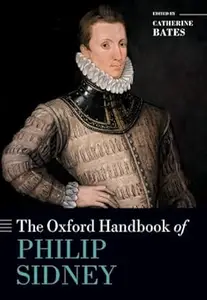The Oxford Handbook of Philip Sidney

Free Download The Oxford Handbook of Philip Sidney
by Catherine Bates
English | 2025 | ISBN: 0198859457 | 859 Pages | PDF | 17.7 MB
The Oxford Handbook of Philip Sidney is the most comprehensive collection of essays on Sidney published to date. Written by an expert team of international specialists, its fifty chapters cover every aspect of Sidney’s life, works, and the times in which he lived. It provides fresh interpretations of Sidney’s career, texts, and legacy, drawing on the most recent historical and archival research and showcasing the range of critical approaches-historicist, formalist, postcolonial, post-humanist, presentist, materialist, economic, ecological, affective, queer, and zoocritical-which has opened up so many new perspectives in the study of Renaissance literature in recent years.
Part I, ‘Contexts’, re-examines Sidney’s life, family relations and friendship groups, his roles as courtier and patron, and the ‘Sidney legend’ which largely shaped these narratives round the political agendas of his day. Part II, ‘Works’, offers new, in-depth readings of Sidney’s writings, including his poetry, prose, letters, and psalms. Part III, ‘Literary Contexts’, explores the pedagogic and practical contexts within which these writings were produced, including Sidney’s own education, the humanist emphasis that literature teach and delight, newly evolving ideas of authorship, and the potentials presented by the circulation of his works in manuscript and print. Part IV, ‘Sidney’s Forms and Genres’, drills down further into his literary texts, showing how they both drew from and contributed to new developments in the writing of sonnets, lyric, pastoral, romance, fiction, and drama within the larger sphere of the European literary Renaissance. Part V, ‘Sidney’s Poetic Craft’, illuminates Sidney’s distinctive skills as a poetic maker, revealing his attention to detail by providing minute analyses of his prosody, his interest in song, his sentence structure, and his unique conception of style. Part VI, ‘Sidney and His Times’, embeds Sidney within his period, providing individual chapters on his active engagement with its religion, philosophy, logic, rhetoric, politics, with Europe, the colonies, maps, money, class, gender, the passions, animals, visual culture, music, clothes, architecture, and gardens. Finally, Part VII, ‘Reception’, investigates Sidney’s enduring legacy as his works continued to be read and re-written by later generations, shaping the course of the English literary tradition to come.


